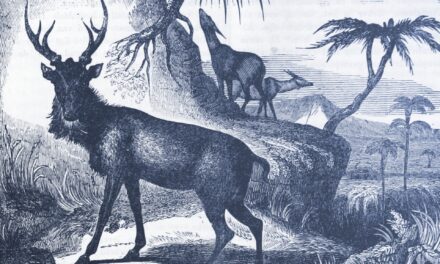
How do I start writing plants into my story?

“My MC loves raising plants. Can you give any tips on how to incorporate that into the story?”
Plants can serve as powerful symbols, metaphors, and plot devices, adding depth and richness to your stories, and are a great thing to include in your narrative! Whether you’re writing a lush, vibrant garden scene or a barren, lifeless landscape, incorporating plants into your writing can help you create immersive and memorable settings, but they can also serve to develop complex characters and worlds by considering your characters’ relationships with them or incorporating them into your world’s mythos.
The symbolic meaning of plants
Plants have long been associated with various symbolic meanings across cultures and traditions and can symbolise various themes and emotions. We have an introduction to the symbolism of flowers in this Tumblr post; however, here are some more ways you can think about how to incorporate the symbolism into your own writing.
- Consider the real-world cultural symbolism you want to draw from. Symbolism that is common in one country, and one period of time may not be the only way to represent something.
- Think about the health of the plants. For instance, wilted flowers can symbolise decay, loss, or the passage of time.
- A character’s relationship with a plant can reveal aspects of their personality or emotional state, especially when combined with that plant’s symbolic nature.
- The growth or decay of a plant can parallel a character’s personal growth or decline in line with the character trait that plant represents.
- Consider researching whether a plant has multiple symbolic meanings and whether you can use that to give your characters depth.
Use plants to develop characters
Plants can also be used to develop characters by reflecting their personalities, backgrounds, or emotional states. For example:
- A character who meticulously tends to their plants may be detail-oriented, patient, and disciplined.
- A character with a neglected or overgrown garden might be struggling with personal issues or feeling overwhelmed.
- A character who keeps a specific type of plant, such as a rare orchid, may have a unique backstory or quirk.
- A character’s favourite plant or flower can reveal their cultural background, memories, or aspirations.
- An allergy or aversion to certain plants can add depth to their personality and create potential conflicts or challenges.
- A character’s knowledge of plants, such as their medicinal properties or cultural significance, can showcase their intelligence, education, or heritage.
Writing plants into world-building
In the setting of your story, plants can play a crucial role in world-building. Consider the following:
- If writing genre fiction, create unique, fictional plants that have specific properties or uses within your world, such as a plant that glows in the dark or one that can heal wounds.
- Use plants to create a sense of atmosphere or mood. A dark, foreboding forest can evoke feelings of danger or mystery, while a lush, vibrant garden can convey a sense of peace and tranquility.
- Consider how the climate and geography of your world would influence the types of plants that grow there. A desert setting might feature hardy, drought-resistant plants, while a tropical setting would have more lush, exotic vegetation.
- Incorporate plants into your world’s mythology or folklore. Certain plants might be sacred to specific cultures or have legendary origins.
- Show how plants are used in daily life, such as for food, medicine, clothing, or shelter, to add depth and realism to your world.
Create atmosphere with plants
Plants can be powerful tools for creating atmosphere and setting the mood in your writing.
- Consider the sensory details associated with plants, such as their scent, texture, and appearance.
- Use vivid descriptions of plants to immerse your readers in the setting and convey the desired emotional tone. The presence or absence of plants can also symbolise the overall state of the world or society.
- Use plants to create contrast between different settings or to reflect changes in the story’s tone.
- If your characters are associated with plants, show how their stories develop and change by reflecting those same changes in the plants that surround them.
Plants as plot devices
Plants can serve as powerful plot devices in your stories. They can be used to:
- Create obstacles or challenges for characters, such as a poisonous plant or a rapidly growing vine that blocks their path.
- Provide clues or solutions to mysteries, like a rare flower that holds the key to a puzzle.
- Serve as a catalyst for character growth or change, such as a character learning to nurture a plant and, in turn, themselves.
- Represent the passage of time or the changing of seasons, mirroring the story’s progression.
- They can be used to create suspense and foreshadow future story beats.
- Serve as a symbol of hope or resilience if they survive and flourish despite harsh conditions.
Research plants for authenticity
When incorporating real-world plants into your writing, it’s essential to research their characteristics, habitats, and cultural significance to ensure authenticity. Things to look for might include:
- Research the specific characteristics, growth patterns, and care requirements of the plants you include.
- Consider the climate, soil type, and seasonal changes that affect the plants in your story’s setting.
- Use reliable sources such as botanical gardens, gardening books, or online plant databases.
- Incorporate sensory details such as the texture of leaves, the colour of flowers, or the taste of fruits.
- Avoid relying only on stereotypes or generalisations about plants to maintain authenticity.
- If you’re writing about a specific culture or time period, research the plants that were significant to that context and how they were used.
- Visit local gardens, parks, or natural areas to observe plants firsthand and gather inspiration for your descriptions.
































